

How Much Does a POS System Cost? | 2021 Guide | Tech.co
source link: https://tech.co/pos-system/pos-system-cost
Go to the source link to view the article. You can view the picture content, updated content and better typesetting reading experience. If the link is broken, please click the button below to view the snapshot at that time.
How Much Does a POS System Cost?
POS systems can range from a single iPad app to a multi-location hardware and software setup. We help you find the right one.
Square POS
Vend POS
Talech POS
TouchBistro POS
Epos Now
Smaller, quick-service businesses, due to cost-effective pricing, strong brand recognition and support.
Businesses of any size looking for a POS to integrate with any existing systems
Small businesses, thanks to an intuitive interface and flexible features
Helpful features for kitchen and serving staff
Large or growing businesses that want easy set-ups and training
Free (but transaction fees apply)
$99 per month
$29 per month
$69 per month
$39 per month
Marketing, customer loyalty, and employee management features all cost extra
Extra registers cost $49 per month
Two-hour training package costs $199
Reservations cost $229 per month, online ordering costs $50 per month
Single training costs $175 or can pay $35 per month for unlimited sessions
Unlimited — but each till requires a new license
- Lite plan gives 1 user license
- Pro and Enterprise plans offer unlimited users
Unlimited devices on each plan
Solo plan allows for one user, dual and team allow for two and five, respectively.
Single user per license across all plans
Point of Sale systems typically cost between $50-100 per month for small businesses with one register, while larger businesses and franchises will likely have to pay $100-200 per month for extra features and registers. Including the initial cost of hardware, a POS system may cost between $1200 and $6500 for the first year, and $600 to $1200 for each subsequent year.
Granted, this is a broad range. There are loads of POS suppliers on the market, some of whom offer free services, while others charge per transaction. Others might not even disclose their pricing publicly and do it on a business-by-business basis, instead.
That's where Tech.co comes in. Our experts have spent hundreds of hours researching the POS market to make your choice as easy as possible. We provide all the information you need upfront to help you compare and contrast providers before making your decision.
What's more, you can even use our quick and easy quotes questionnaire which will give you bespoke prices for each of the leading providers on the market. Join the other thousands of business owners who used the tool last year to compare and save on their POS system.
In the middle of the coronavirus pandemic, it's worth having a POS that can manage online ordering, contactless payments, and deliveries to help make your store, restaurant, or any other business as safe as possible.
(All prices correct as of 9 June 2020)
POS System Costs by Industry
As you'd imagine, different industries place different demands on their POS systems. Restaurant and hospitality businesses, for example, often need to help customers split bills and offer takeaway orders. Traditional retail businesses, on the other hand, require quick and effortless checkouts with dependable inventory features.
Of course, all businesses now require online functionality — not simply due to the pandemic — but also due to growing consumer demand for online features. If there's one reason to get started with a new POS in 2021, it's online features.
We'll cover exactly how much your business should expect to pay for a POS system depending on the industry it's in, as well as the best providers for those industries. You can also choose to get bespoke quotes for your restaurant or hospitality business, or your retail business quickly and easily.
Retail POS system cost
The best retail POS system on the market is Vend. It's a very flexible system and offers brilliant value for money, with prices starting from $99 per month.
However, when it comes to overall value for money, Square rules the day. It charges no monthly fees and instead charges transaction fees on every sale you make — 1.75% for card-based transactions or 2.5% for keyed-in sales. Talech, meanwhile, is a more rounded POS system. It's capable of working for any type of business — but works particularly well in the retail industry. Prices start from $29 per month but this introductory plan is quite limited.
Inventory
When considering retail POS systems, a strong inventory system is essential. This will let you see and control all of your products, helping you to fulfil orders, move products between stores, offer discounts, and know when you're running low on stock.
Vend POS, for example, uses one central product catalog which syncs across all your sales channels — whether that's in-store, online, or on social media. As a result, if you sell your last product in-store, your website will automatically update to reflect your stock status.
Store and business managers can import or add products to Vend's backend, including barcode information and any product variants — different sizes, colors, materials, and so on. You can even automate stock orders, helping to ensure that you never run out of your top sellers.
All of this is available on Vend's cheapest Lite plan. It costs $99 per month and you won't have to pay any transaction fees on the sales you make. However, if you want to access ecommerce sales, you'll need to choose Vend's Pro plan which costs $129 per month.
Ecommerce
Online sales are essential these days — and Square is a great choice for retail businesses looking to expand (or solidify) their online presence.
You can easily create an online store for free with Square's cheapest plan. You'll be able to list an unlimited number of products — whether they're physical or digital, automatically synced with the rest of your inventory. You can send order status text alerts to customers including order confirmation, pickup location and time, and delivery information. Users will also be able to click and collect in-store.
Contact forms can easily be created, as well, which allow you to gather user information including email addresses and contact information. These can help you build mailing lists and other marketing tools to help you with promotions. What's more, if you choose Squares's Performance or Premium retail plans — $19 and $54 per month, respectively — you'll be able to issue abandoned cart emails to help customers convert and let customers create product reviews.
Find the best retail POS system for your business with our personalized POS quiz. Match your retail needs to comparable quotes.
Sales
Sales features are critical to a good retail POS. Vend, Square, and Talech all let your business accept credit, debit, contactless, chip, and good old-fashioned cash payments with their first-party and third-party terminals and card readers. You can also issue and track gift card payments through all three companies.
Payment processing — the act of getting the money from a customer's transaction into your merchant account — can be complex but, with Square, payment processing is handled in-house. Vend and Talech, on the other hand, work with a range of huge payment processors including PayPal, Shopify, and even Square.
Hardware
When running a retail business, you need the hardware to offer a great service to your customers. Square, for example, gives you a free contactless card reader, which plugs straight into an iPhone or Android device whenever you sign up for an account.
For $10, you can get a swipe card reader to fit iPhones or Android devices, while for $49 you can grab a standalone contactless card reader. A portable terminal, meanwhile, costs $299.
Talech and Vend POS, however, work with a range of third-party hardware devices including payment terminals, receipt printers, and more. You can buy these directly from the providers, or separately and sync them up with your platform.
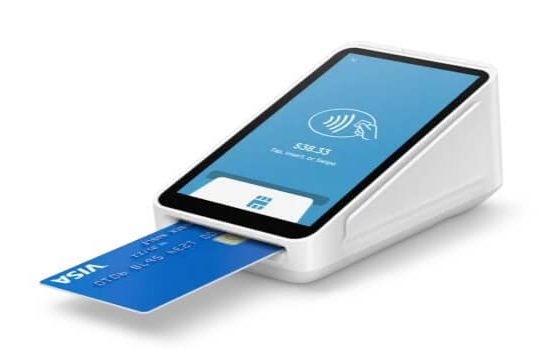




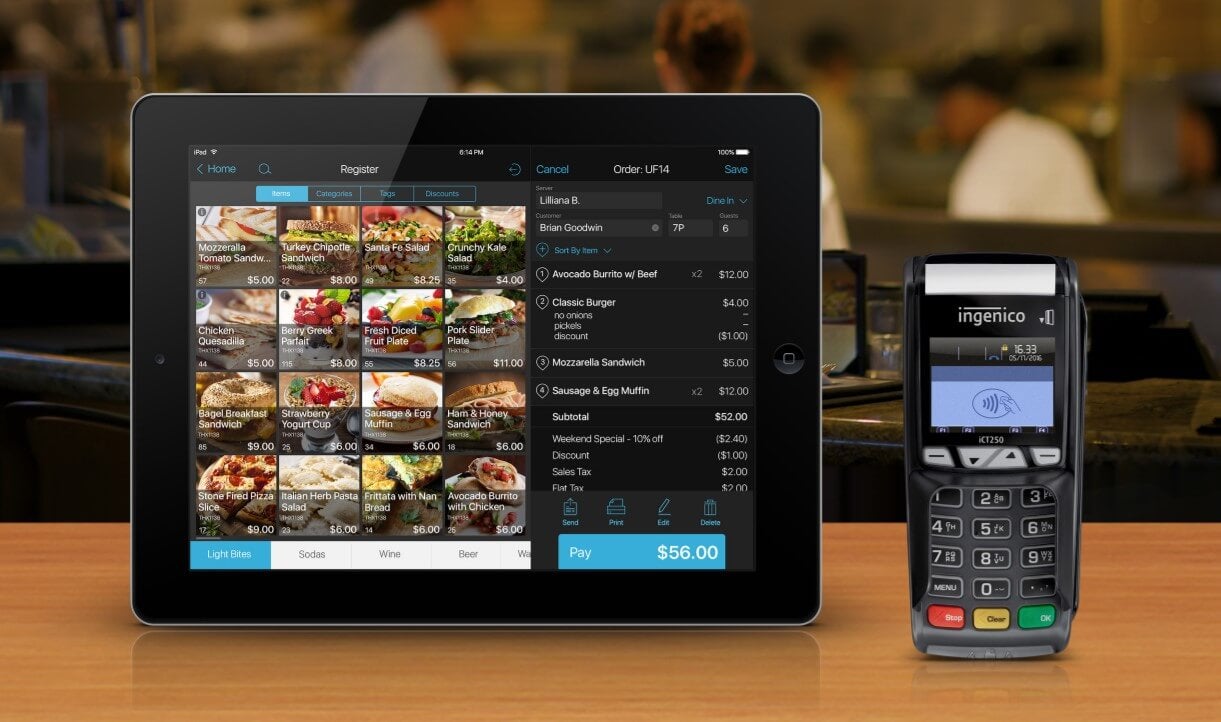


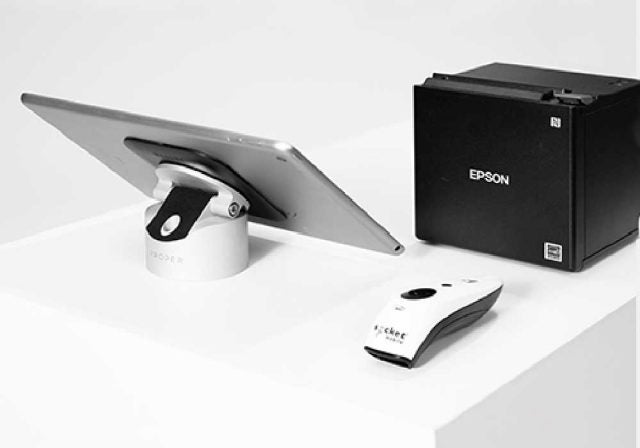


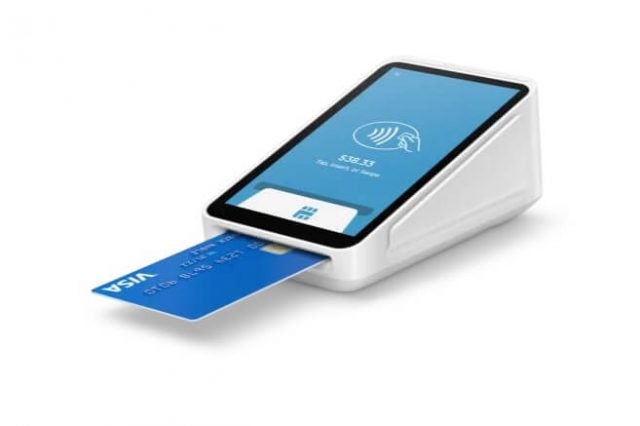










Restaurant POS system cost
The best POS systems for restaurant businesses are Square (again), EPOS Now, and TouchBistro. Square's transaction fee-only model, as well as its range of restaurant-specific features, make it the perfect choice for startup and established hospitality businesses, alike.
EPOS Now is still a very affordable option with prices starting from $39 per month. It's probably best-suited to larger restaurant businesses with excellent employee management tools. TouchBistro, meanwhile, is a bit more expensive, with prices starting at $69 per month but has a great range of restaurant-specific features — as the name would suggest.
Match your restaurant, café or bar to the right POS system, and compare prices, with our free POS quiz.
Hardware
Getting the right hardware is absolutely essential for restaurant and hospitality businesses — it's not as simple as just offering customers a card reader.
Restaurant businesses will need portable card readers to offer tableside payments as a bare minimum. Many restaurants also use tablets or portable interfaces to help take orders at tableside, as well. Square, for example, works brilliantly with iPads, which can easily let staff process orders and payments while moving around.
Businesses with busy kitchens would also likely benefit from a kitchen display system (KDS). TouchBistro's KDS, for example, will instantly surface orders placed by your servers to your kitchen staff to get started on. You can also integrate the KDS with printed tickets. It can also help you manage order pacing, so each person at a table gets their meal at the same time.
Fast service cafes and restaurants can also use customer-facing displays or self-service kiosks to help customers feel in control of their orders — and reduce staff workloads. Square and TouchBistro both offer their own systems to help make customers' lives easier.
Takeout and delivery
Being able to offer takeout and delivery is huge for restaurants — and even some bars and pubs during the pandemic.
Square, for example, lets you integrate popular delivery and takeout services through its central dashboard. TouchBistro, meanwhile, doesn't quite have the same level of integration — you have to take orders separately and enter them into your POS. EPOS Now also offers a range of integrations for delivery and takeout services.
Ingredient tracking
While it is essential for all businesses to track what goes into a sale and what comes out — it is even more essential for those in the restaurant and hospitality sectors. TouchBistro and EPOS Now both offer the ability to track your inventory down to the ingredient level.
This granular level of detail can help you keep track of how many ingredients you have in stock — if you make pasta or bread in-house, for example, it's prudent to keep an eye on how much flour you have in stock. It also allows you to make efficiencies with your operation, do some items sell out faster than others, for example?
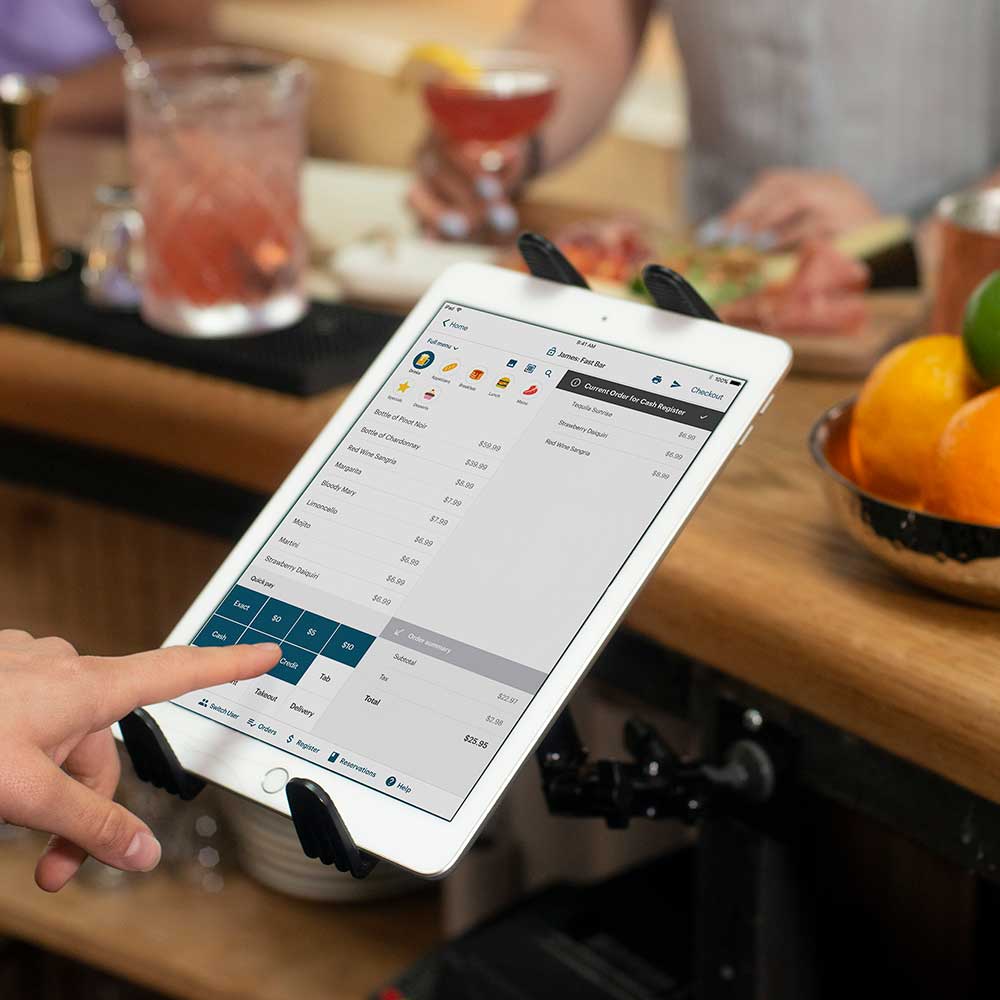
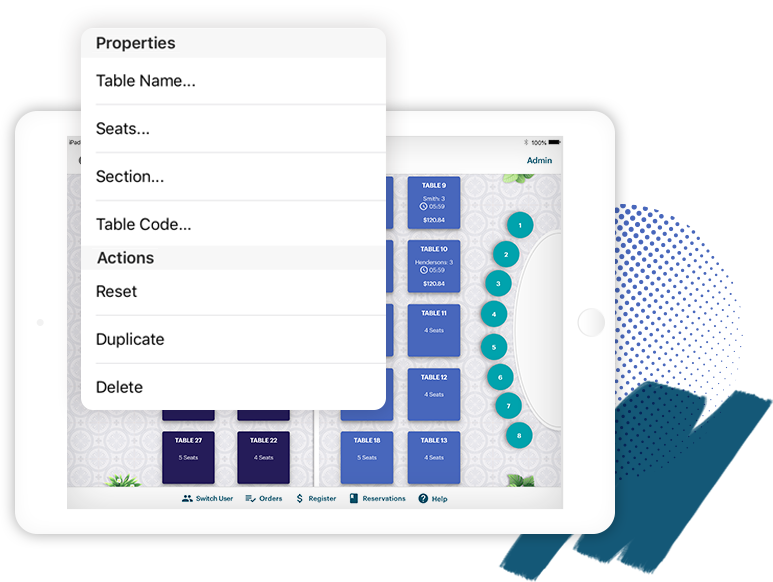






POS System Cost Factors
Not all POS systems are equal. Even the best POS systems might not be quite right for your unique needs. Here's a checklist to help you think about which one you'll want.
- Size of your business — This has a major impact on the price of your POS. Each additional register or location will cost extra under most POS software plans. A tiny market stall or mall kiosk with no plans to expand, meanwhile, might not even need to pay at all, thanks to the free options available. Some providers are well-suited to franchise businesses, as well.
- The number of products you sell — Some providers let you sell an unlimited number of products (or have an unlimited turnover) right off the bat. However, some providers will give you a maximum number of products to list and/or sell depending on the pricing plan you choose.
- Amount of features — Perhaps the least surprising cost factor is the sheer amount of features a POS system has to offer. After all, it only makes sense that a more comprehensive, useful system would cost more. If you're unsure which features will be essential to your business, you can read more about the best ones over here.
- Quality of features — While most POS systems offer an analytics feature that displays data, some are more complex than others. A more pricey POS might offer more detailed data-crunching options that can help streamline a large business's operations.
- Type of industry — Restaurants and retail are the biggest industries with their own types of POS systems, but plenty of niche industries have specialized POS systems that address their specific needs, from pizza delivery tracking to table layouts.
- Potential for expansion — What's the five-year plan for your business? If you aim to open a new location, you should take into account how much more your POS vendor of choice might charge you. You can always migrate to a new POS if you need to, but picking one that will best suit your growing company can save you time and effort down the road.
- Hardware — Some POS providers work with all manner of third-party peripherals from receipt printers to iPads. However, other providers' platforms only work with the company's own hardware — make sure you know where your provider stands before committing.
Total cost of a POS system – examples
Typically, single location businesses with one register will need to pay between $50 and $100 per month for software. Hardware costs will be separate but could run to more than $1,000 depending on the exact pieces you need.
Larger operations with multiple locations, on the other hand, should expect to pay between $100 and $300 per location, per month. Again, hardware costs should become similarly expensive, and you could expect to pay around $3,000 in total — plus ongoing costs for extra receipts and the like.
A small restaurant choosing TouchBistro, for example, could expect to pay $69 per month for the software, around $300 for an iPad to control the POS — or $700 for a Mac Mini if it is using multiple iPads for different servers. Cash drawers start from around $50 while card readers can be had for around $70. All told, then the restaurant could kit itself out for $490 plus the ongoing software cost.
Small retail businesses using Vend, for example, would likely need to pay $129 per month for the software. Plus the $50 cash drawer, $30 barcode reader, $300 iPad terminal, and $70 card reader, these businesses could get off the ground for around $450 plus the software.
If you're confused about what options would most suit your business — we get it. It's time-consuming doing tons of research and we understand how costly getting it wrong can be. That's why we've created our custom-built comparison form. It allows you to get matched to the providers that suit your specific business needs, all in under a minute.






Kitchen Display System
Customer-Facing Display
Terminal
Cash Drawer
Card Reader
Barcode Scanner
$30-100
$200-600
$120-1,000
$50-200
$30-299
$30-70
They can bring huge efficiencies for restaurants but paper tickets still work well
Can be really helpful for fast-service restaurants and cafes but it's more of a nice-to-have
Terminals are the hub of your on-site POS system and can become hugely expensive depending on the accessories built-in
Features such as automatic opening and integrated receipt printers can make cash drawers more expensive
Contactless card readers come cheap but if you need to enter prices, PIN numbers, or swipe cards, you'll need to pay more
Essential for retail businesses but can also be handy for some restaurants
Of course, some businesses will have other, more specific hardware requirements.
Self-service kiosks, for example, might be very at home in fast-food restaurants whilst not exactly matching the vibe in a high-end restaurant. These can cost anywhere between $300 to $1,500.
Lots of POS systems also rely on iPads, rather than monitors. These cost between $329 to $599 depending on whether you want a cheaper, smaller iPad Mini or a more expensive iPad Air, or even an iPad Pro. Not all POS systems require an iPad but some work best on Apple's handheld computers.
Cash vs card
You'd be forgiven for thinking that modern businesses don't need to bother with cash drawers — everyone has cards. However, while cash drawers can seem an expensive outlay, you need only make a few transactions before they start to recoup their costs — plus it's always better to be safe than sorry.
POS hardware can make your system costs spiral quickly, so it pays to get the right system at the first time of asking. That's where our bespoke quotes form comes in. We match your business' needs to the perfect POS supplier and make sure that you don't pay a dime more than necessary.
Verdict: How Much Does a POS Cost?
Restaurant businesses, meanwhile, can get a fully-featured POS system with new hardware from just $559 — again, with most of the cost being hardware.
Of course, both businesses could shrink those costs significantly by eschewing the monthly software fees with Square POS. With its transaction fee-only model, you'll only start paying for the service when you start making money. What's more, Square is perfect for almost all businesses — regardless of whether they're in the retail or hospitality sectors.
However, you could save a not inconsiderable sum of money by getting bespoke quotes from the leading POS providers on the market, regardless of which industry you're in. Our quick and easy quotes comparison tool will provide you with obligation-free quotes from all the providers on this page (and a few more) in just a couple of minutes.
Tech.co is reader-supported. Using Tech.co's comparison form, you can receive quotes from various suppliers, tailored to the needs of your business. If you enter into a contract with a provider, we may receive a payment for the introduction. Equally, if you make a purchase through the links on our site, we may earn a commission from the retailers of the products we have reviewed. This helps Tech.co to provide free advice and reviews. It carries no additional cost to you, and doesn’t affect our editorial independence.
Adam is a writer at Tech.co and has worked as a tech writer, blogger and copy editor for the last decade. He's also a Forbes Contributor on the publishing industry (and Digital Book World 2018 award finalist) and has appeared in publications including Popular Mechanics and IDG Connect. When not glued to TechMeme, he loves obsessing over 1970s sci-fi art.
Recommend
About Joyk
Aggregate valuable and interesting links.
Joyk means Joy of geeK